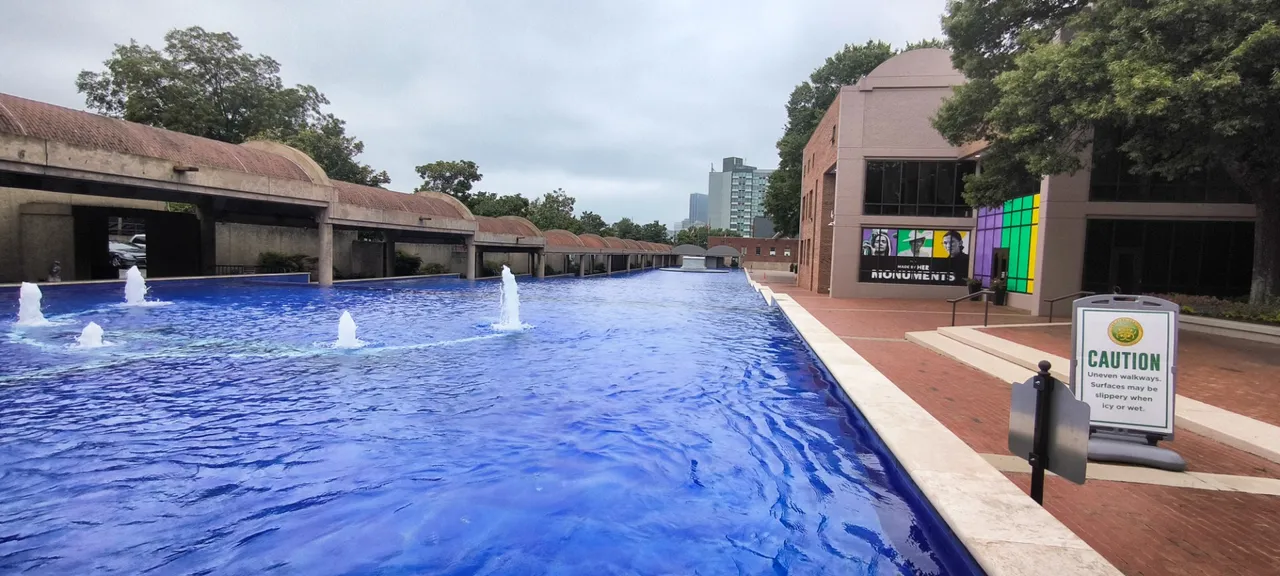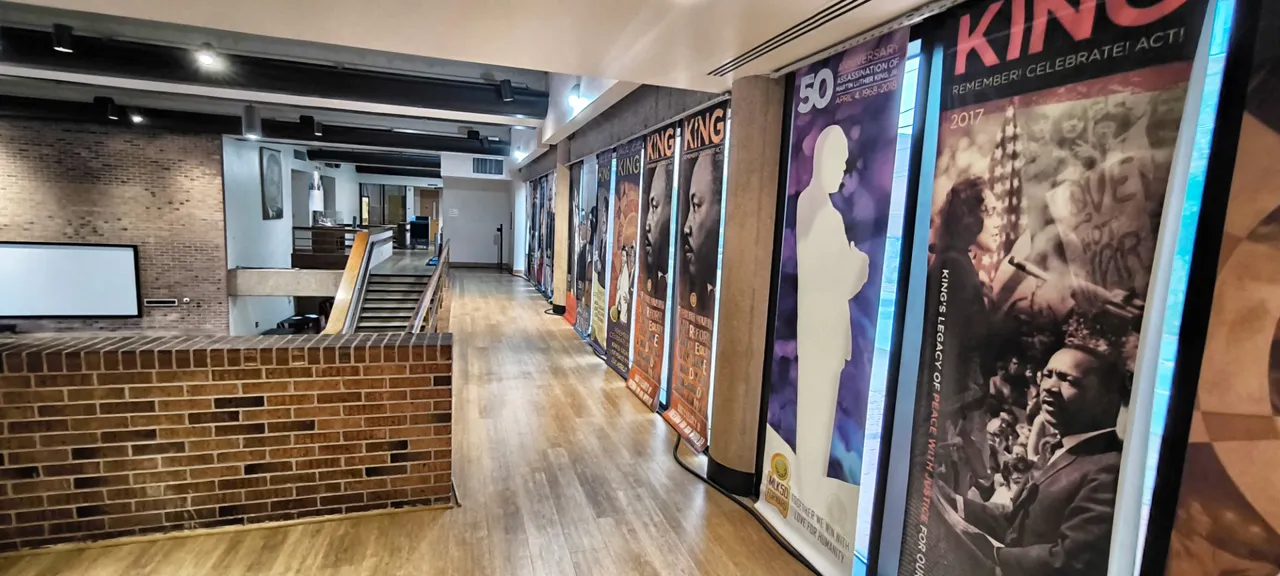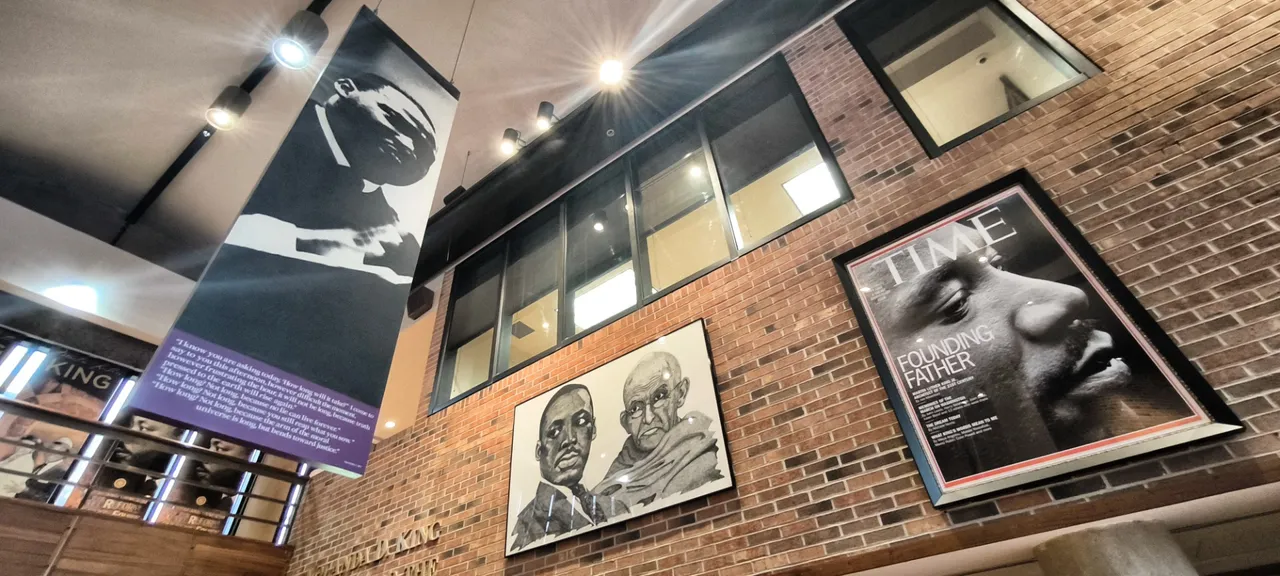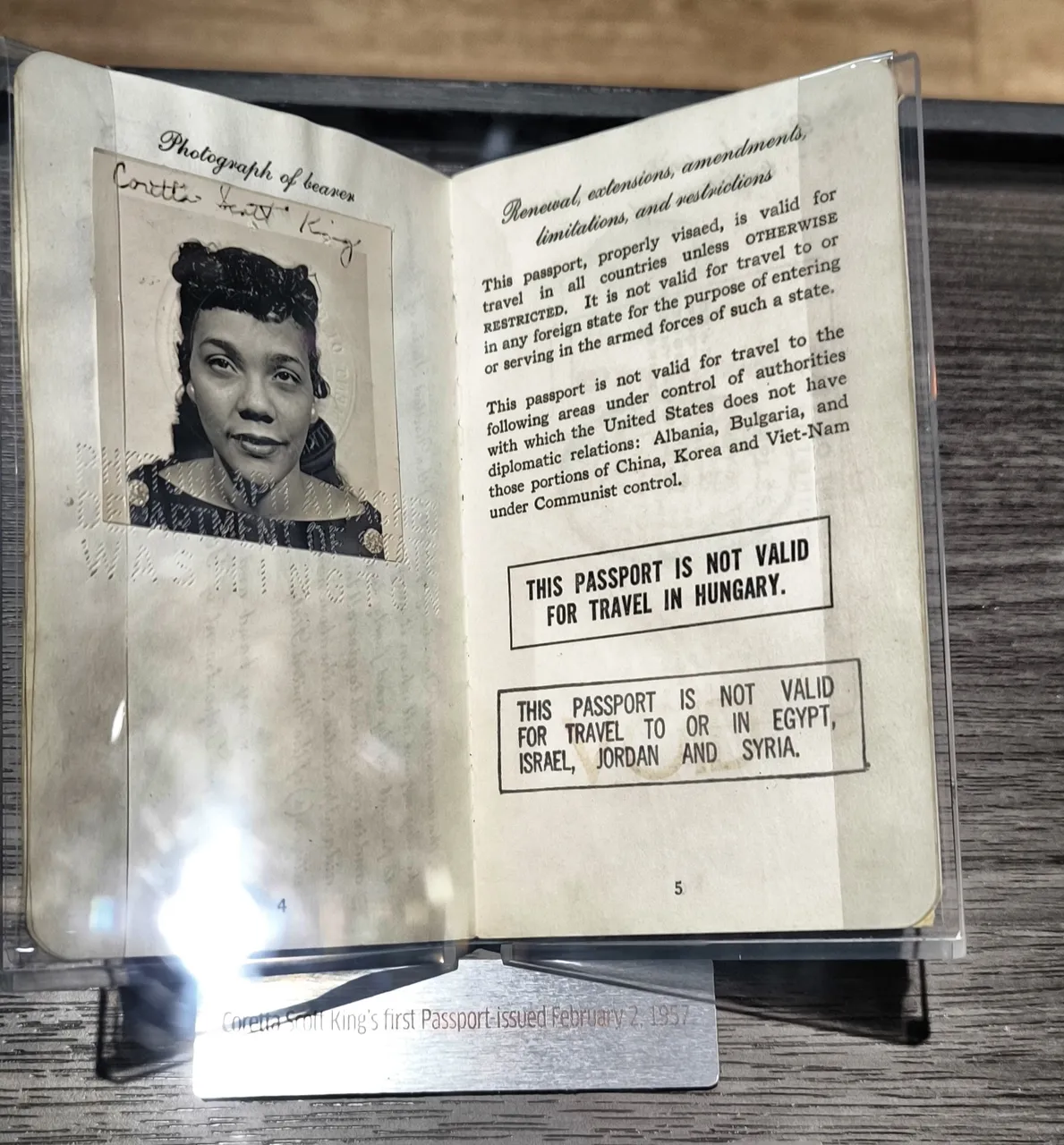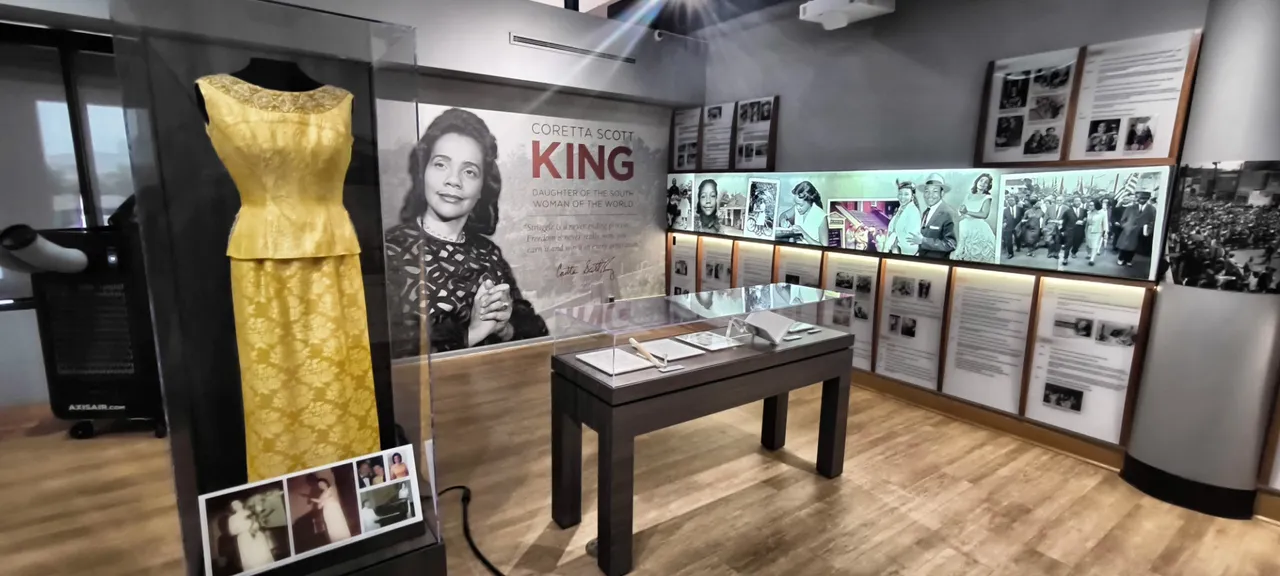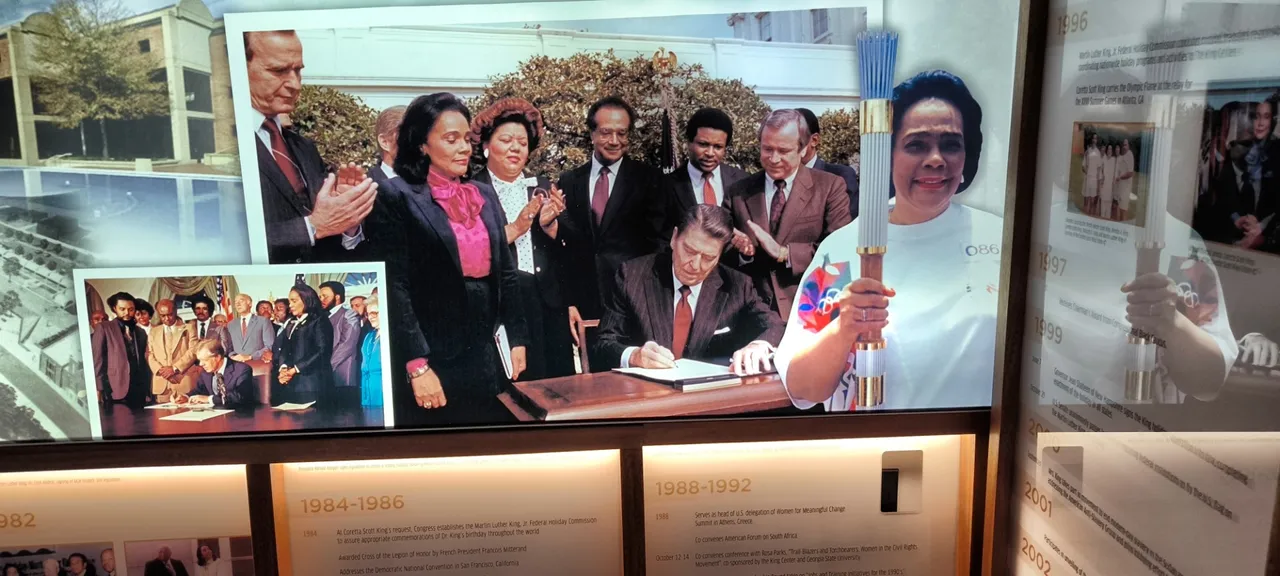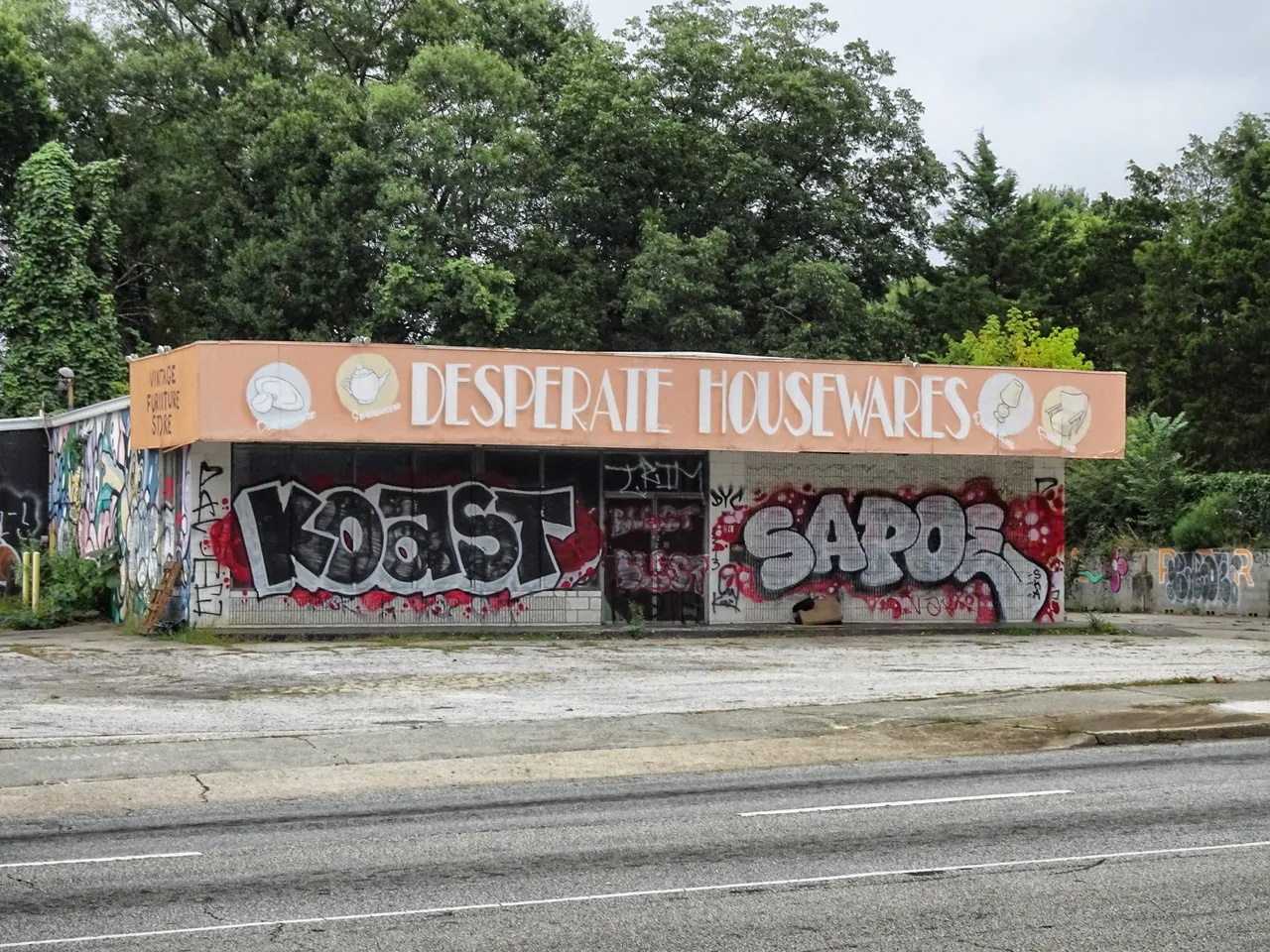
It is the outskirts of the city of Atlanta in Georgia, not a particularly good area with small, well-kept houses, but also with run-down apartment blocks, old, empty factory buildings and homeless people living in doorways. But it all began here, behind a thick green hedge and blue rhododendrons in a wooden house with a veranda and a small wooden porch swing. This is a place of history.
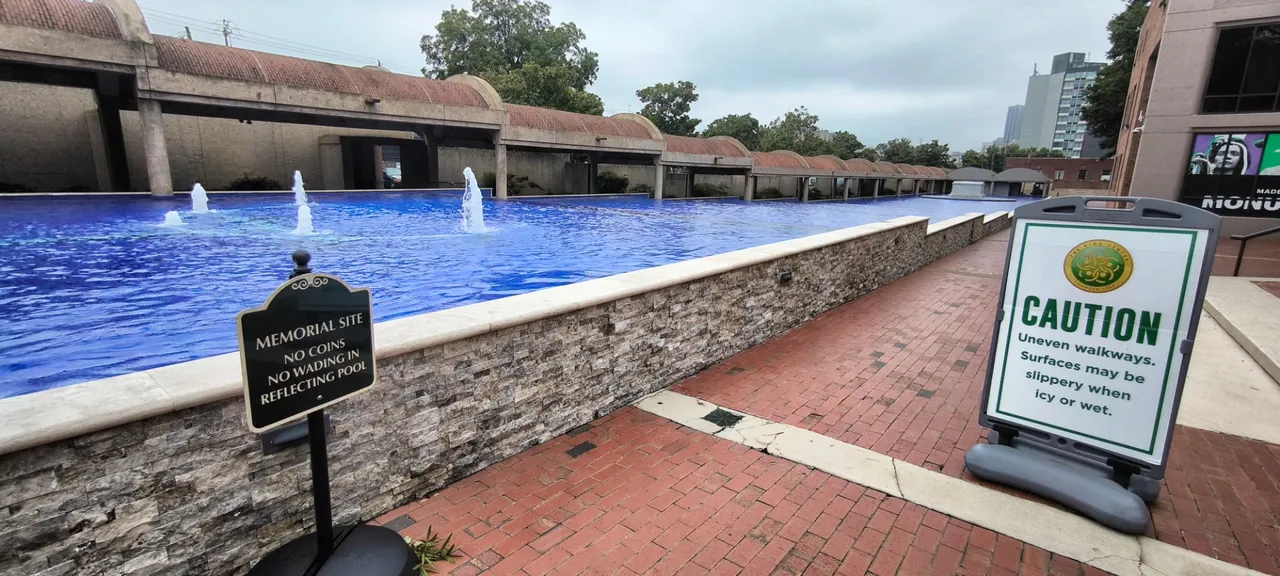 Eternal Basin: The white Stone at the end is Martin Luther Kings Grave
Eternal Basin: The white Stone at the end is Martin Luther Kings Grave
Right in the heart
501 Auburn Avenue number, right in the heart of the Sweet Auburn district of the southern metropolis of Atlanta. Michael King Junior was born here on January 15, 1929, the second of three children. His father only changed his name later, when he became enthusiastic about the work of the German theologian Martin Luther on a trip to Germany. King's father was a pastor and his mother also worked in the nearby Ebenezer Baptist Church.
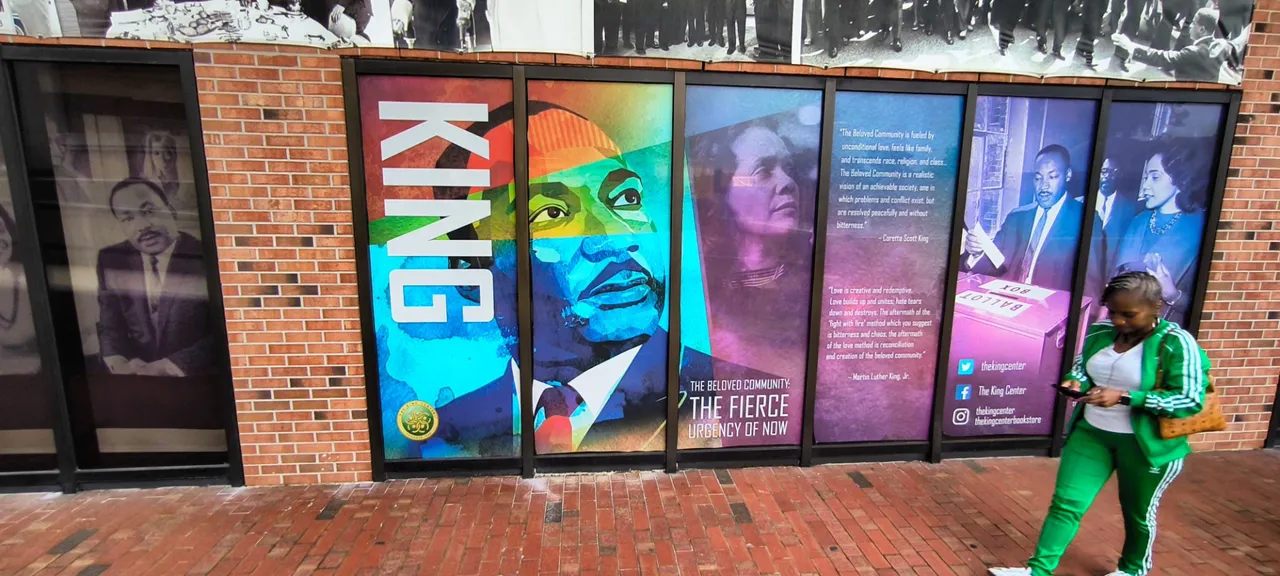 The front of the center
The front of the center
It is still there, a church with no special features. "The family belonged to the upper middle class," says the ranger from the US National Park Service, who organizes the free tours of the birthplace. Around a quarter of the furnishings are original, the rest are replicas. "The whole area is a listed building," says the ranger. Because history was written here that continues to have an impact today.
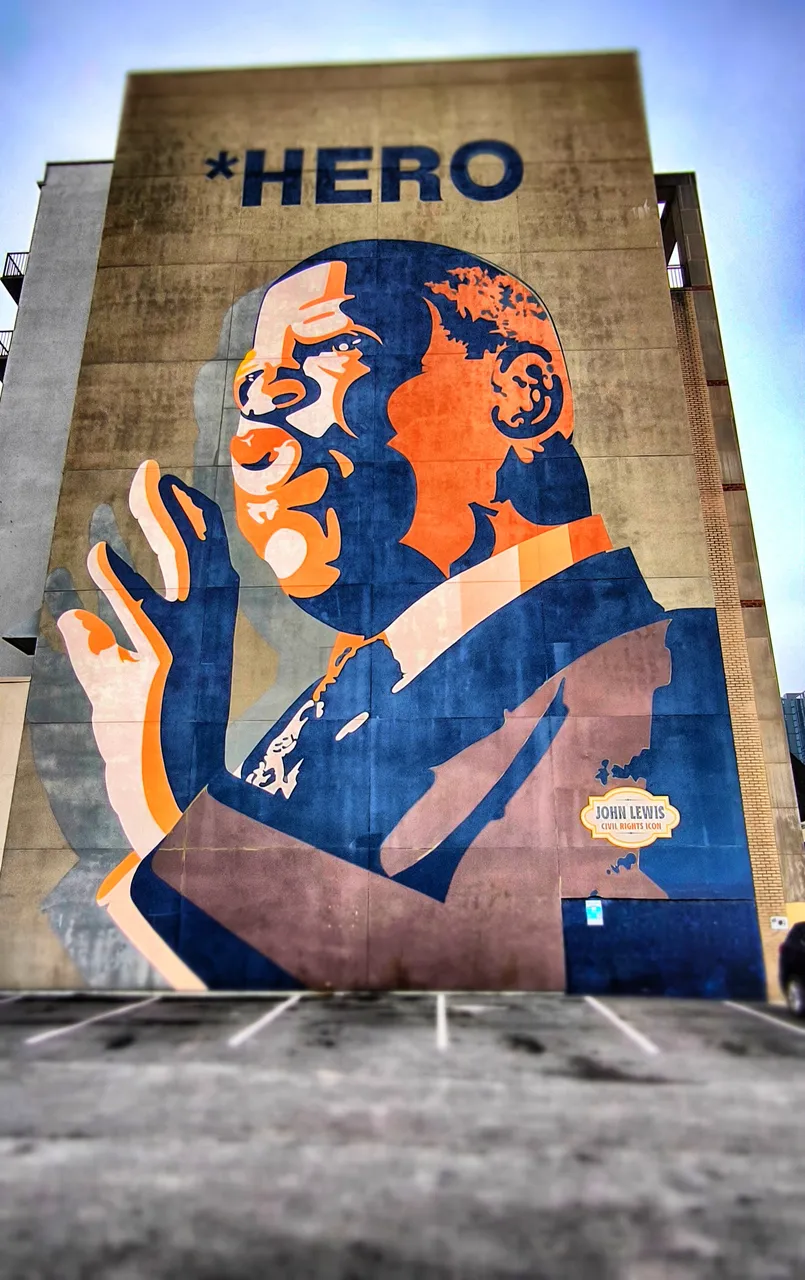 He is still a hero for many people
He is still a hero for many people
Martin Luther's Memorial
The memorial for the great civil rights activist now includes almost all of the important stages in the civil rights activist's life on an area of just a few blocks. Around the corner from the house where he was born is the Ebenezer Baptist Church, where King worked and preached as co-pastor alongside his father from 1960 until his death. The red brick building used at the time, at whose organ King's mother was also shot six years after his murder, is now a museum, but the congregation lives on in the newly built church opposite.
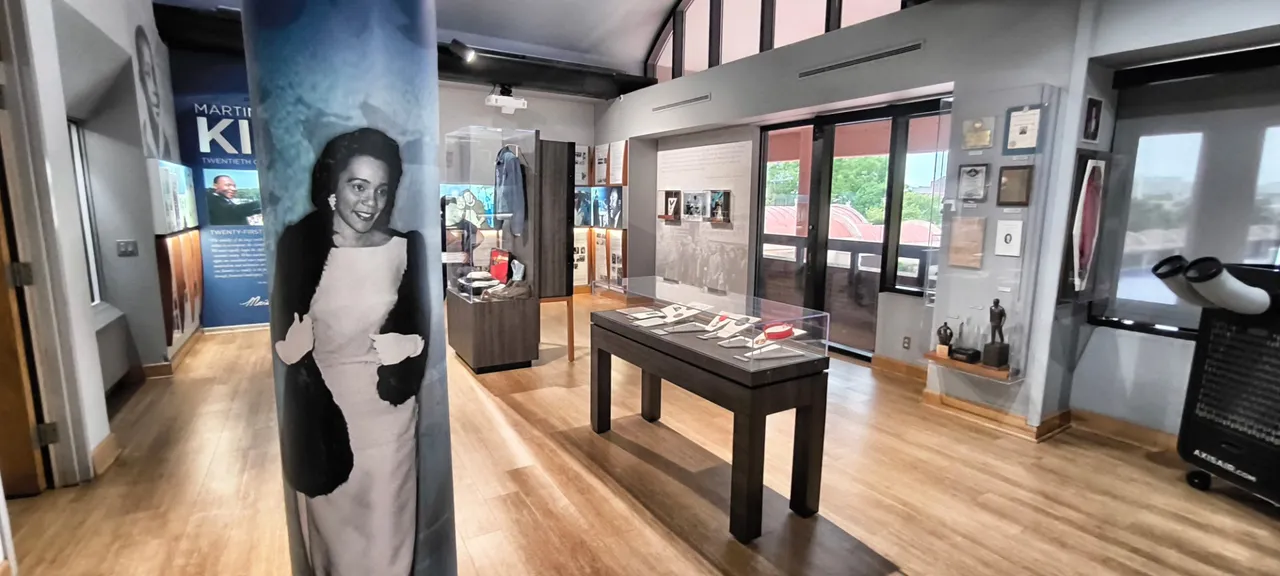 A lot of things from Kings private life
A lot of things from Kings private life
The civil rights activist is buried on the other side of the street, right next to his wife Coretta, who died in 2006. Hundreds of tourists make a pilgrimage to their grave every day. The place does not offer contemplative peace - speeches by King and his wife can be heard loudly from loudspeakers at the grave. In a retirement home across the street, residents are happily barbecuing on the patio.
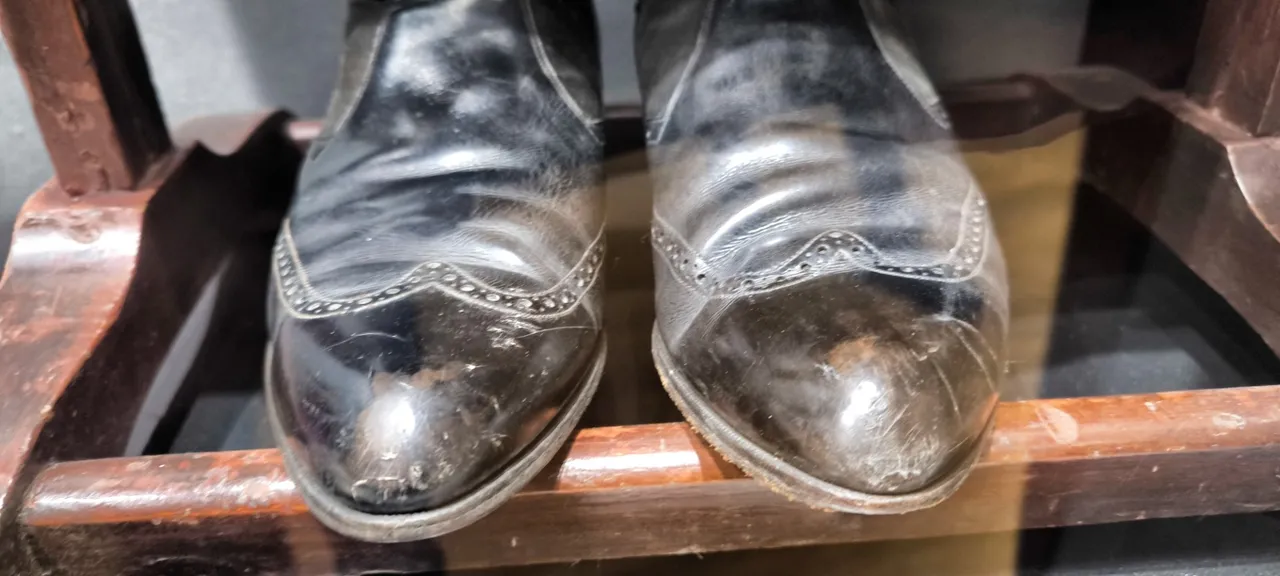 The shoes of the civic rights activist
The shoes of the civic rights activist
Center of remembrance
The center of remembrance for the leader of the resistance against racial segregation is the King Center https://thekingcenter.org/visit/, which has housed King's remains since 1970. In 2006, his tomb was remodeled to include the remains of Mrs. Coretta Scott King.
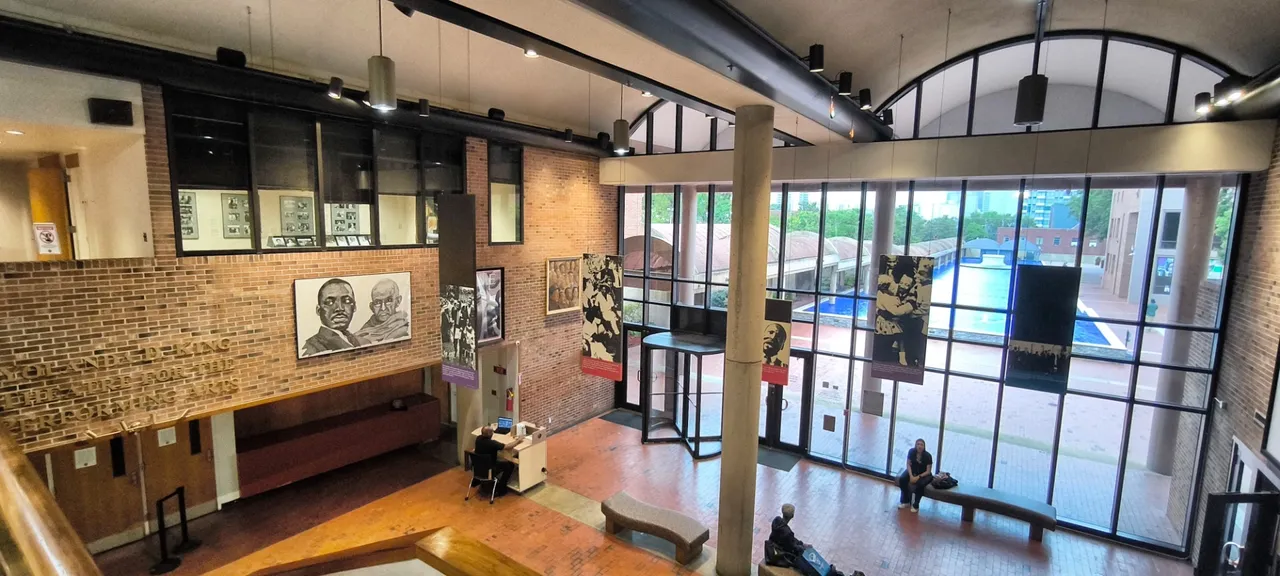 The main room of the center
The main room of the center
Dr. & Mrs. King's tomb is made of Georgia marble, a timeless tribute to his southern roots. An eternal flame burns next door, symbolizing efforts to realize Dr. King's dream of the "beloved community," which was his vision of a world of justice, peace, and equality for all humanity.
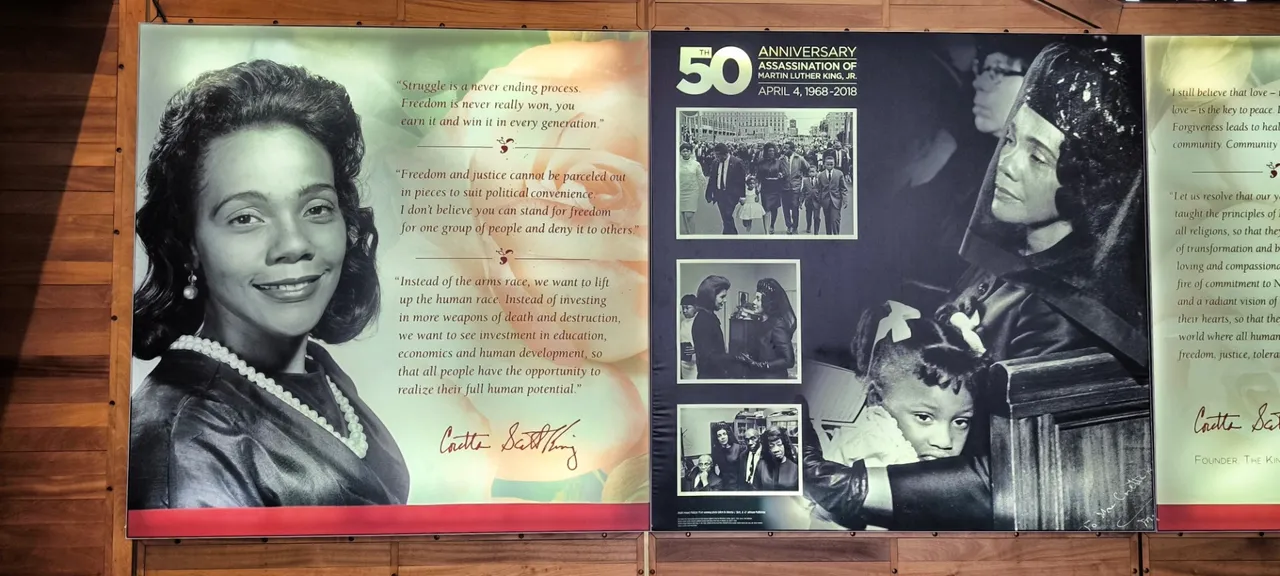 Pictures shows history
Pictures shows history
A lavish building was built next to it, housing numerous memorabilia from Martin Luther King's life and work. Freedom Hall is the campus's exhibition space and the main venue for special events and programs. It contains a large foyer, the Yolanda D. King Theater for the Performing Arts, a bookstore and resource center, and various works of art from around the world.
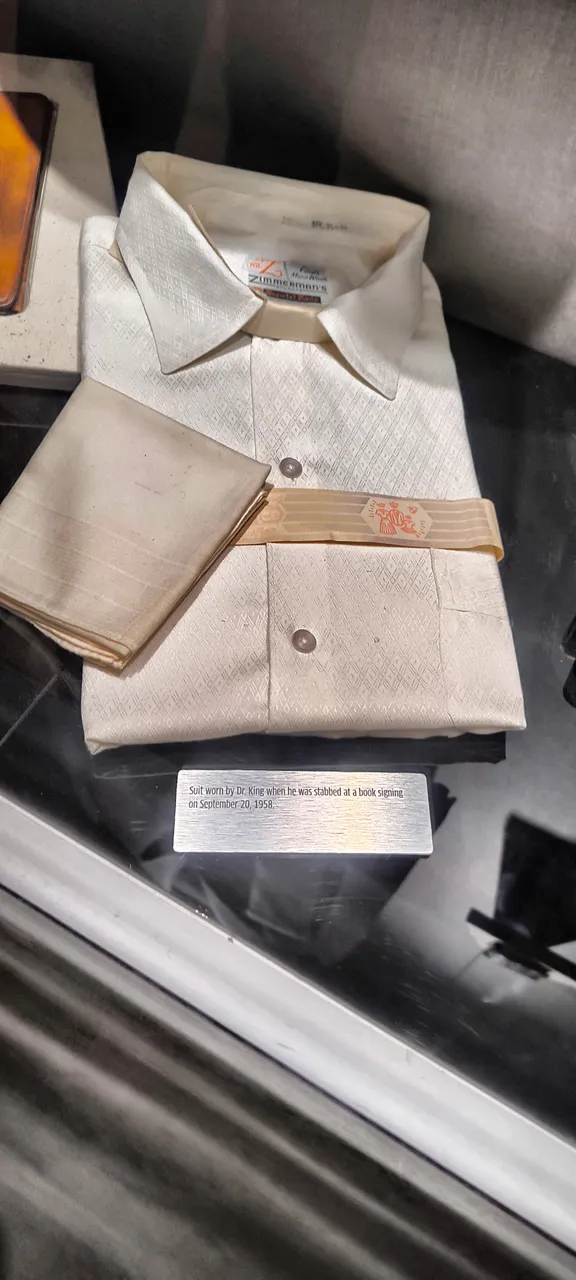 Kings shirt
Kings shirt
Art from Africa
The foyer features art from Africa and Georgia, and the paneling on the staircase is from the sapele tree that grows in Nigeria. The exhibition is on the second floor, and not only King himself, but also his wife, Mahatma Gandhi, and Rosa Parks are remembered here.
 He was a Wrangler-man
He was a Wrangler-man
Rarely are you as close to great world history as when you see King's suits, papers, and the private items of his wife and good friend Mahatma Gandhi on display here. The Coretta Scott King Peace and Meditation Garden features the Coretta Scott King Memorial. The Coretta Scott King Memorial consists of a beautiful, hand-crafted sculpture made of microphones on a mosaic tile base.
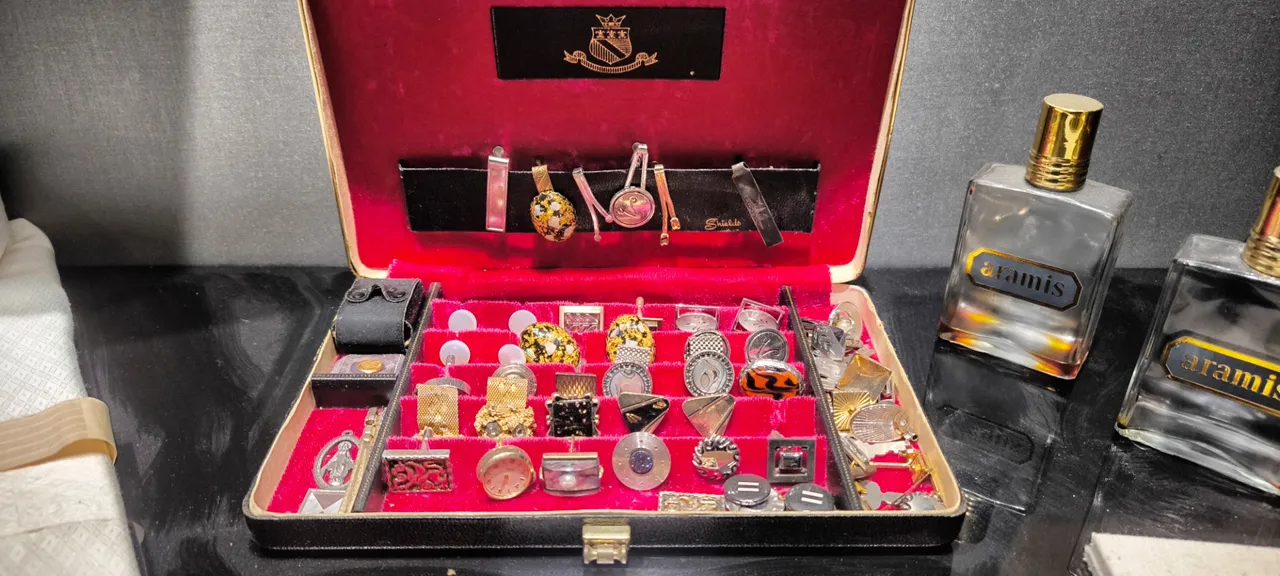 He had a lot of cuffrings
He had a lot of cuffrings
The Power of your own voice
Visitors are reminded of the power of their own voice by having the opportunity to speak into the sculpture and hear their own words amplified. The Coretta Scott King Memorial is one of three installations dedicated by “Hulu Made by Her Monuments” to honor brave women who defied all odds. The memorial was designed by artist Saya Woolfalk.
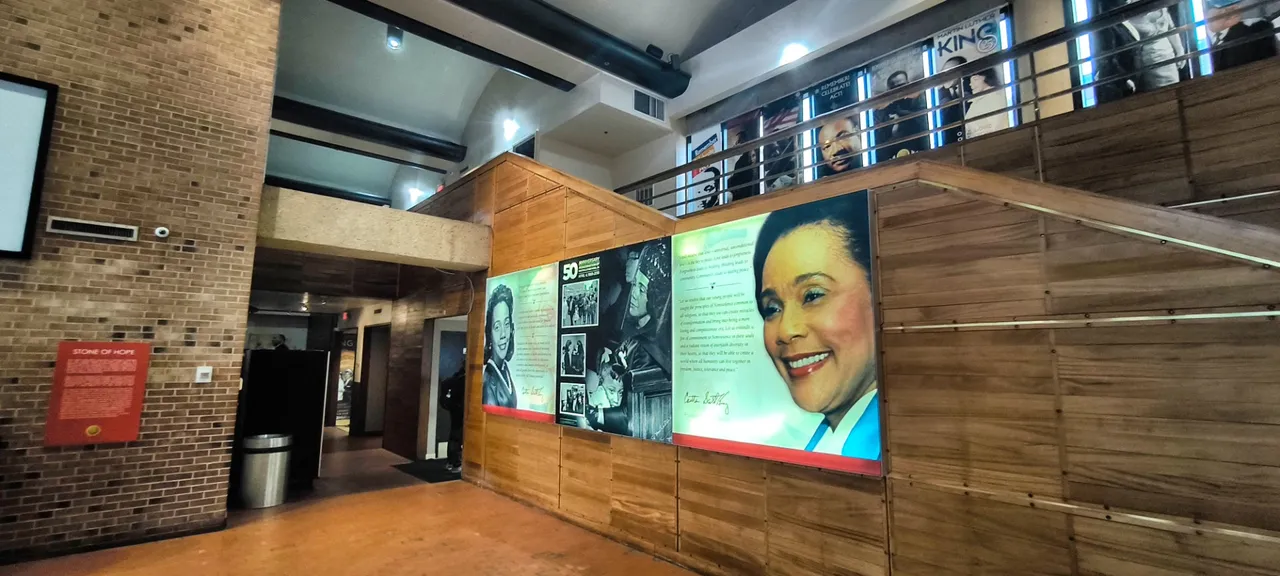 The entree
The entree
There is also a Peace and Meditation Garden surrounded by colorful flora, including the Coretta Scott King Rose. Visitors can enjoy the ambiance and reflect and meditate on the beauty of life.
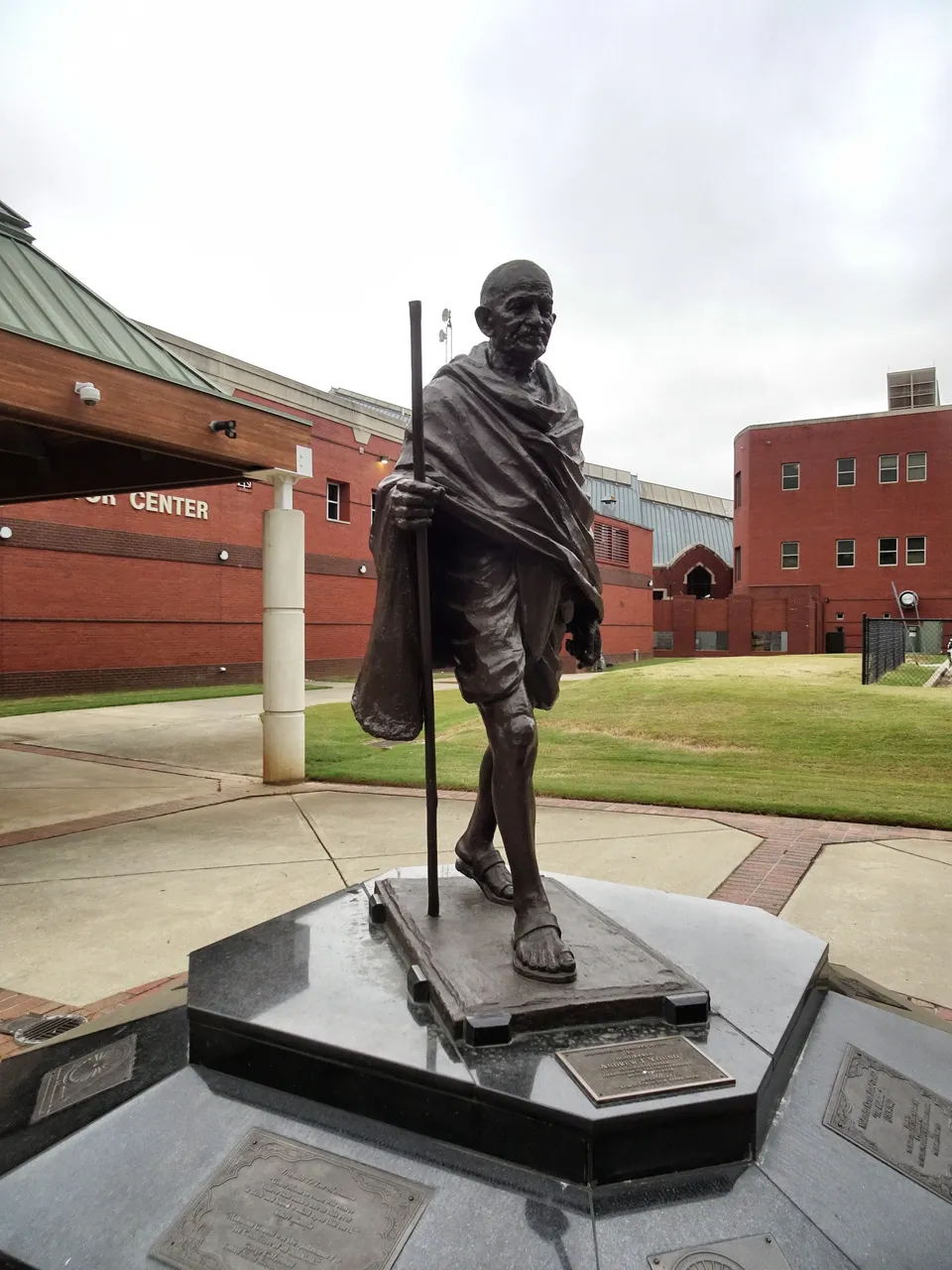 One of King's best friends are near: Mahatma Gandhi Monument
One of King's best friends are near: Mahatma Gandhi Monument
Leader of the Black Civil Rights Movement
Atlanta is King's home, but he took his first professional steps further west. In Montgomery, the capital of the US state of Alabama, he led the famous boycott against racial segregation on public buses, and it was here that he became one of the leaders of the black civil rights movement.
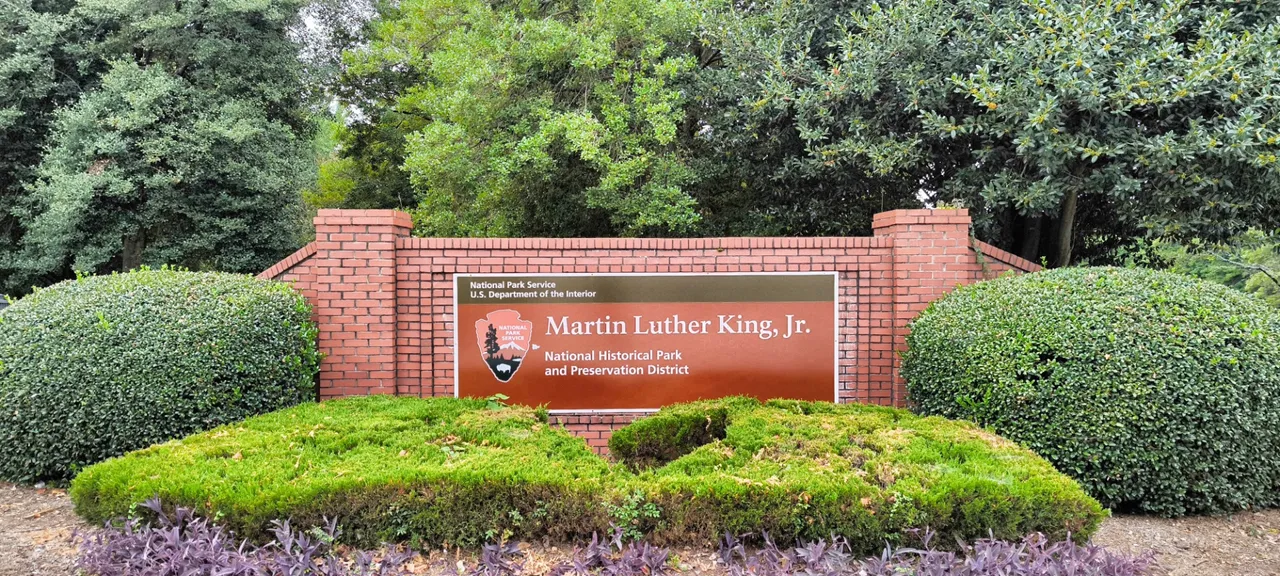 The door of the King's park
The door of the King's park
Until then, there had been no peace and meditation on buses and Trains had different seats for blacks and whites. Schools were segregated, and certain restaurants, toilets, drinking fountains, and even park benches were reserved for whites.
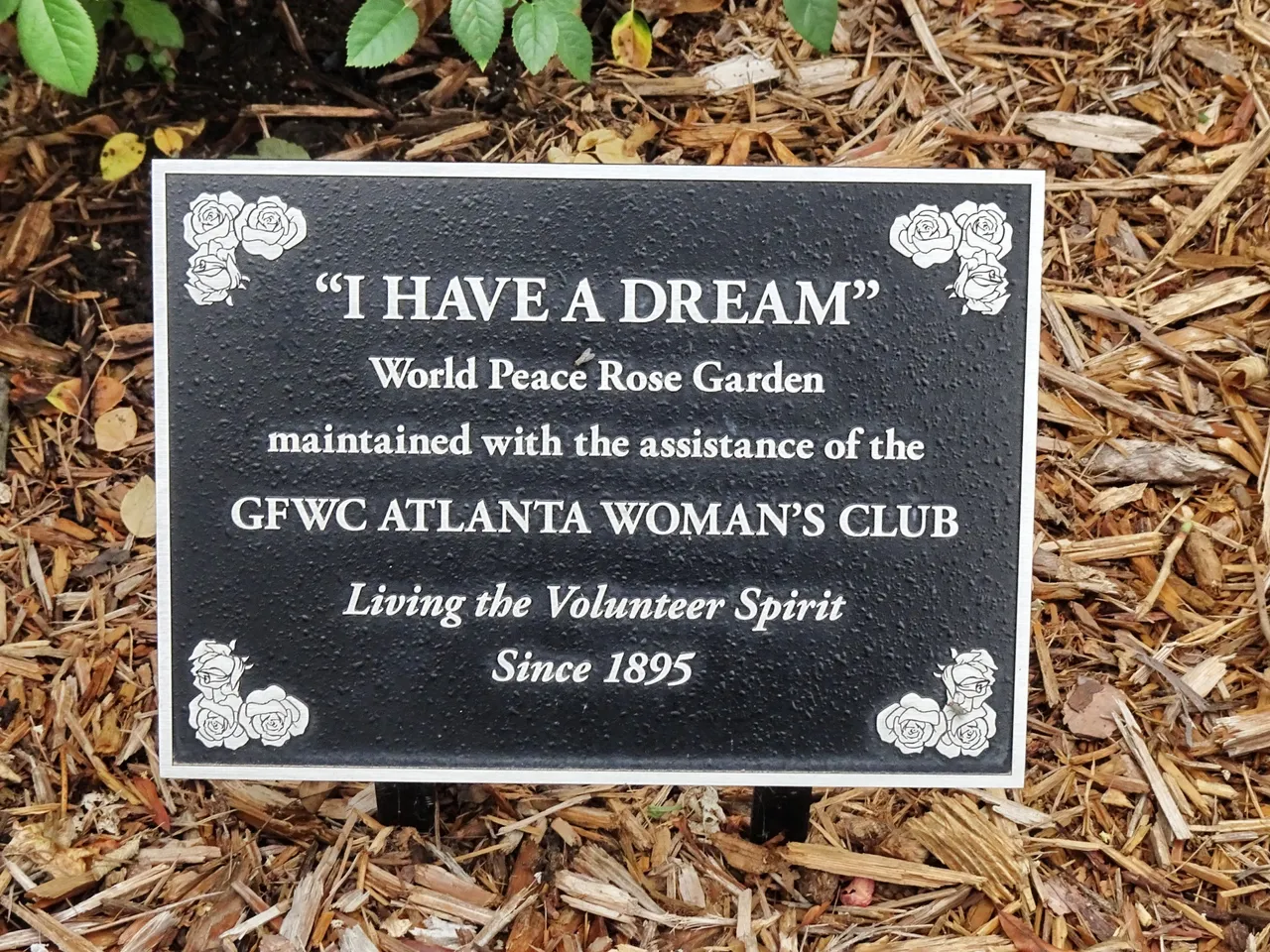 "Living the volunteer Spirit"
"Living the volunteer Spirit"
The state of Alabama was always considered the most reactionary corner of the USA. In the tranquil state capital of Montgomery, the charismatic young pastor King organized the great bus boycott in 1955, which marked the birth of the civil rights movement. But nowhere were the conflicts between the privileged whites and the blacks as violent as in the industrial city of Birmingham, which was soon called "Bombingham."
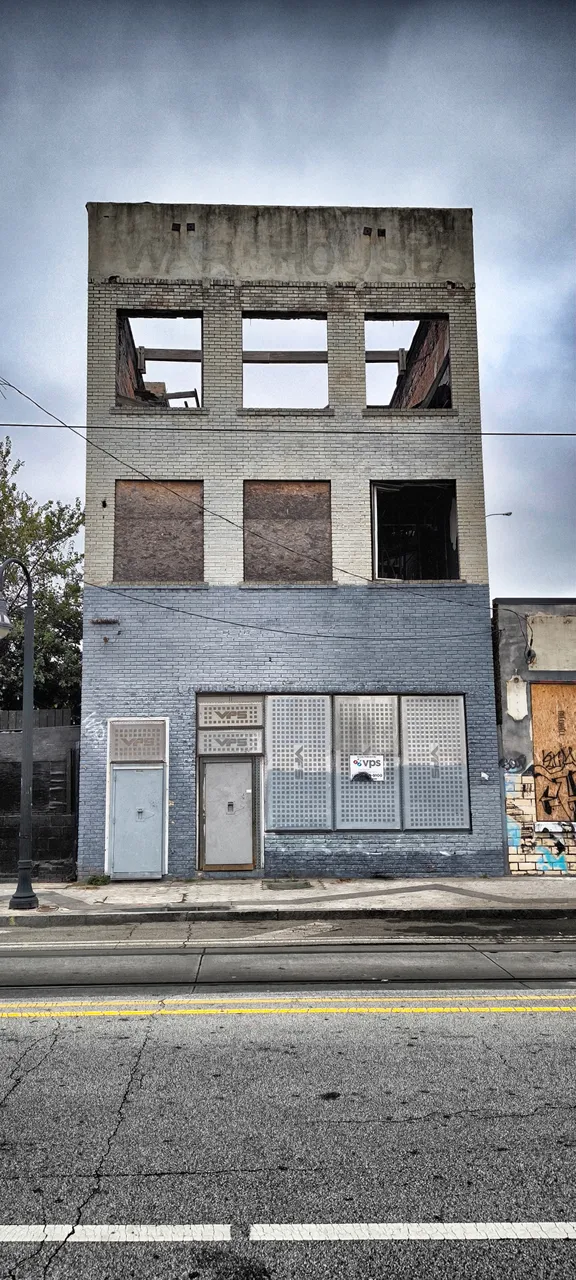 Not everything is beautiful in the area
Not everything is beautiful in the area
A peaceful uprising
In the spring of 1963, Martin Luther King staged a peaceful uprising against the brutal severity of the racist police chief Eugene "Bull" Connor. He trained black demonstrators in non-violent resistance and, together with the local pastor, organized daily demonstrations, sit-ins, and boycotts. The mass arrests that followed were planned in order to unmask state power. On Good Friday, King himself was arrested.
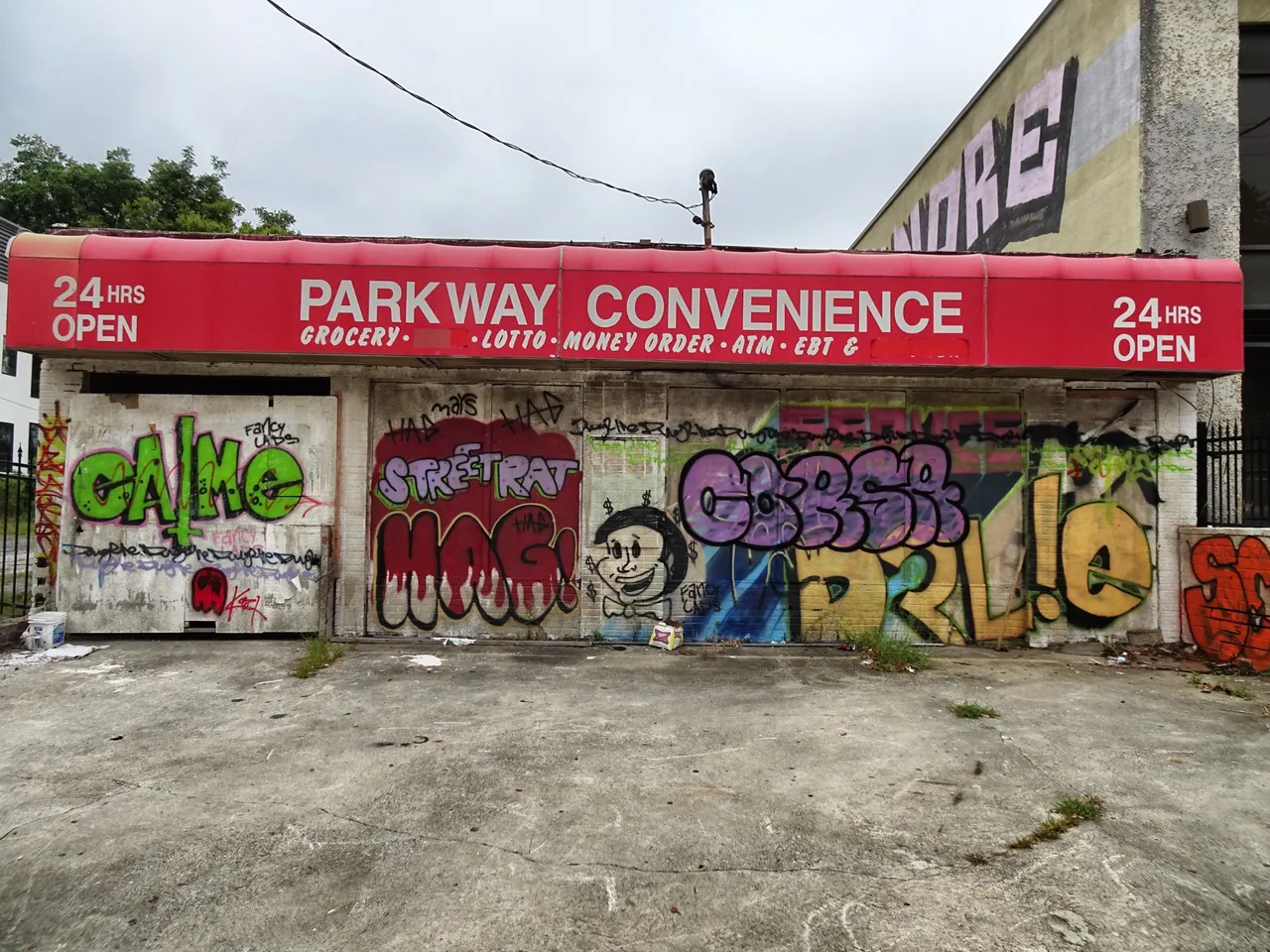 No more convenience
No more convenience
There were protests, full of hatred from both sides. After 1965, the internationally respected pastor came under increasing pressure from within his own ranks. Young, radical blacks no longer wanted to support the course of non-violence. For some, the eloquent intellectual was too elitist. And the progress that occurred after President Lyndon B. Johnson signed the Civil Rights Act in King's presence was too slow for them.
 A lot of documents are presented
A lot of documents are presented
The dramatic history
Legal discrimination ended, but it did not go away. It was only after President John F. Kennedy personally intervened that racial segregation in toilets and drinking fountains in Birmingham was abolished. A tour of the exhibition gives an impression of the dramatic history of the civil rights movement, which by no means consisted only of King, but had in him a leader like no other since.
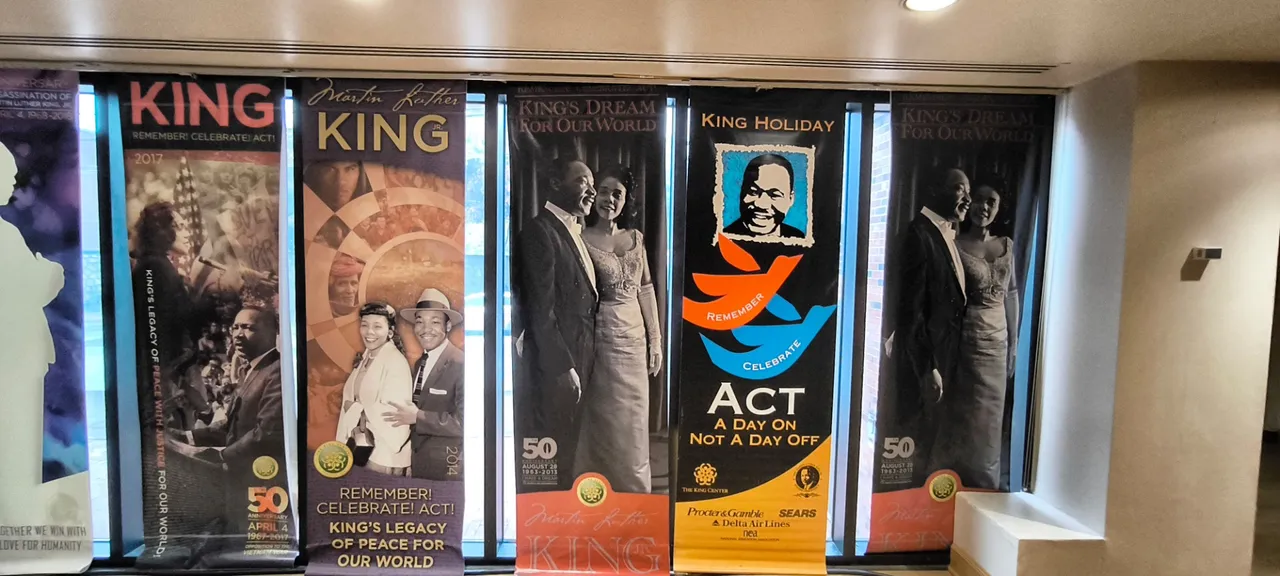 The legacy of the Nbel Price winner
The legacy of the Nbel Price winner
On December 11, 1964, King received the Nobel Peace Prize in Oslo. On April 3, 1968, he said in his famous speech, "I've been to the mountaintop," that he had seen the promised land and was therefore afraid of nothing and no one. On April 4, 1968, at 6:01 p.m., Martin Luther King was shot dead on the balcony of the Lorraine Motel in Memphis by the convicted racist James Earl Ray. The great civil rights activist was only 39 years old.

